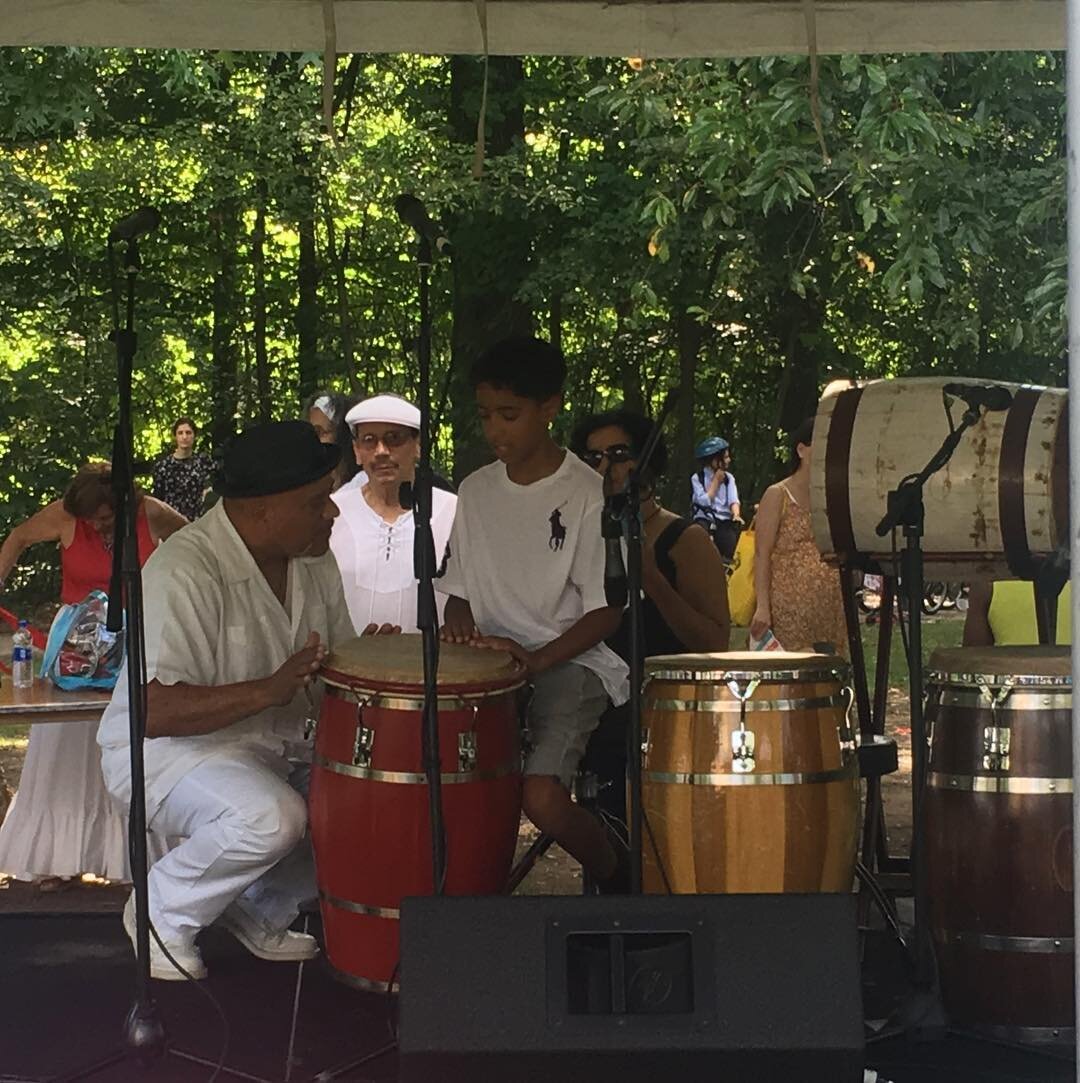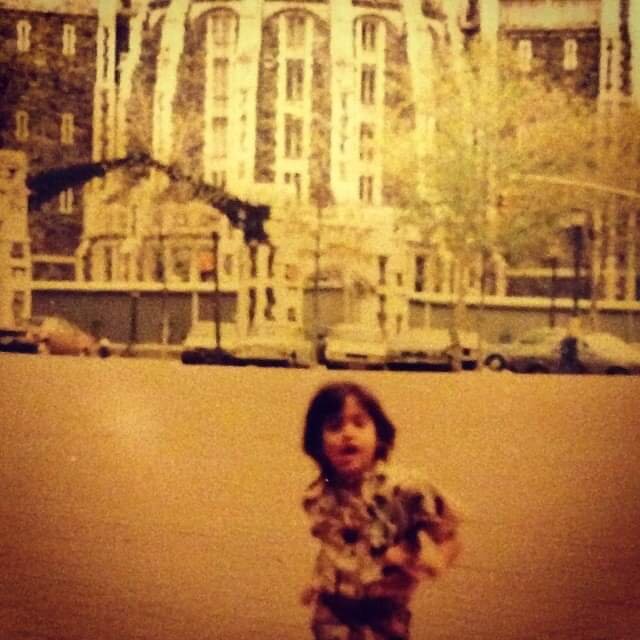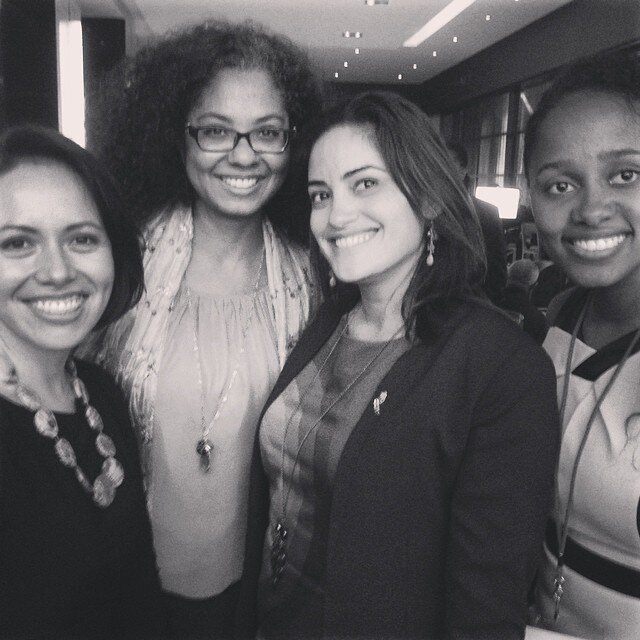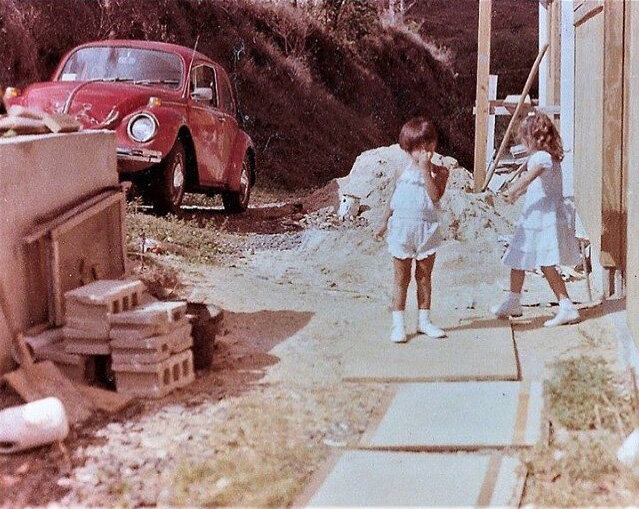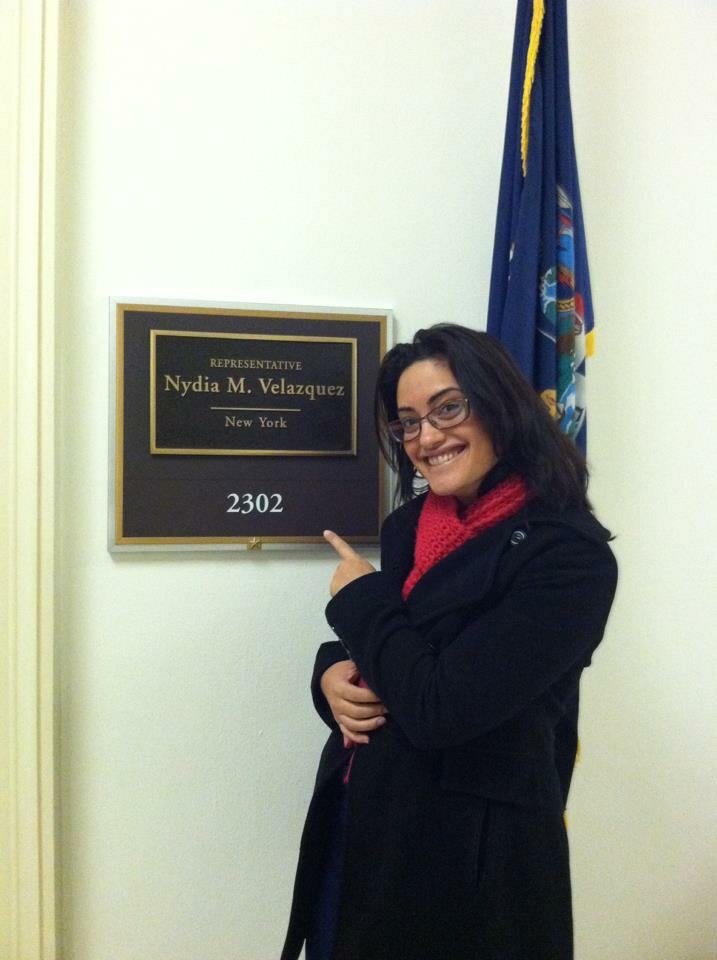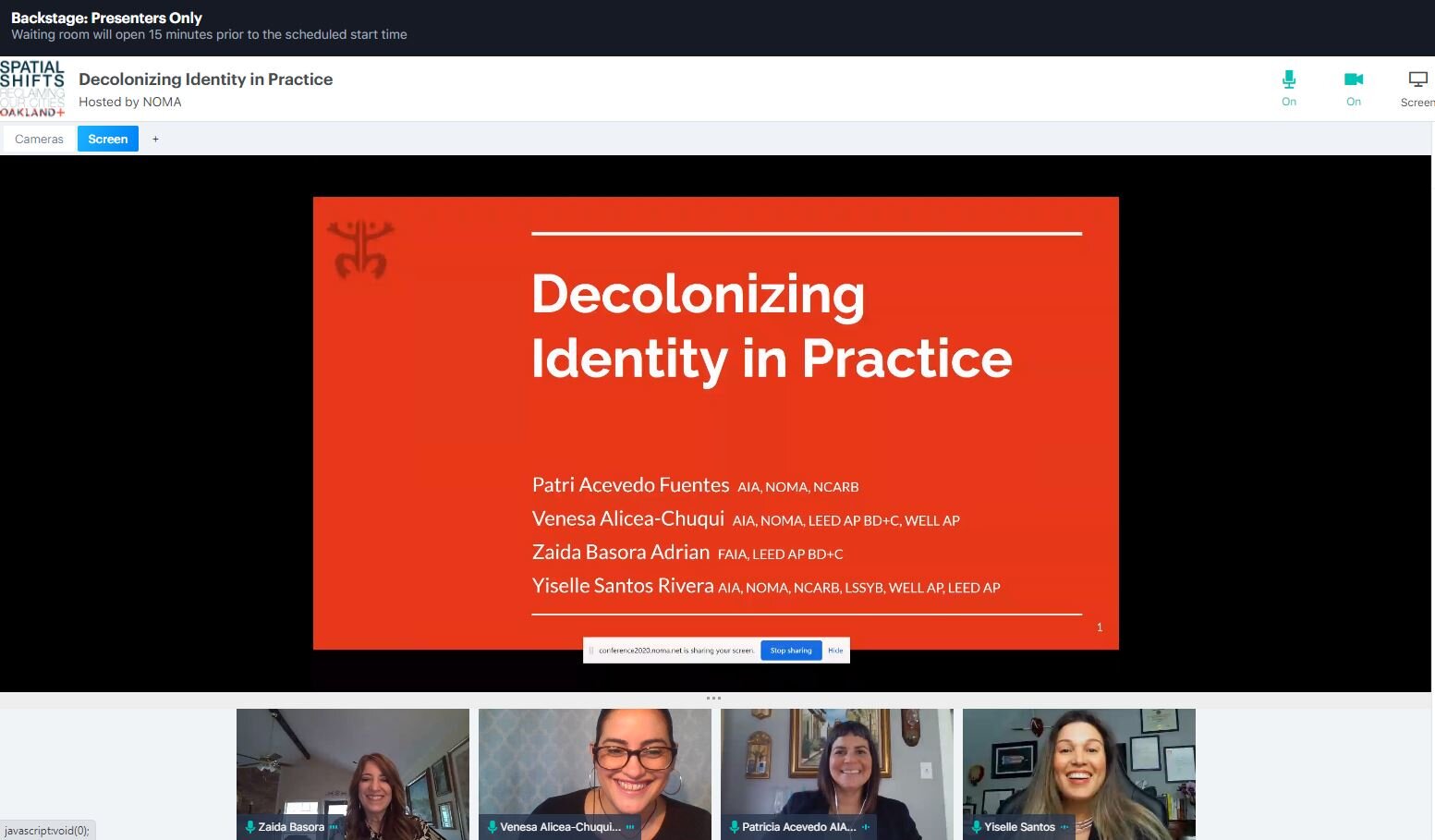VENESA ALICEA-CHUQUI
NYVARCH Architecture | CCNY B.Arch ‘05
Venesa Alicea-Chuqui AIA, NOMA, LEED AP BD+C, WELL AP, a Nuyorican Architect, Educator and Advocate, is Founding Principal of NYVARCH Architecture, a NYC based collaborative Architectural Practice focused on building community and equity through design. She’s the NY representative to the AIA Small Firm Exchange, and President of the Architecture Alumni Group of the Alumni Association of the CCNY, her alma mater (B.Arch ‘05). Committed to design justice, she’s an active contributor to Dark Matter University, Design as Protest, and a former co-chair to the AIANY Diversity & Inclusion and Emerging New York Architects committees.
Artesania from Viejo San Juan : Aqui vive una Arquitecta en armonía con la cultura , which translates: Here lives an Architect in harmony with culture. - Courtesy of Venesa Alicea-Chuqui.
Venesa‘s Fun Facts
Where are you from? Puerto Rican born and raised in New York City
What is your favorite Latina/x dish? Pastelon y Pasteles - but not together …
What is your favorite song by a Latino/a/x artist? Preciosa - Mark Anthony
We love to Dance! I love to dance, it is the best therapy ever, and music and dance is in our blood. While my favorite is ( of course, Salsa ) I also love BOMBA y PLENA , two of the traditional folkloric music types of Puerto Rico. Bomba is a dialogue between the Drummer and the Dancer. Plena was also known as "el periodico cantado" (the sung newspaper) because it contained stories about the history and everyday life of the people. Both were born of African roots, and mixed with the Jíbaro, native Taino, and European musical traditions, to create its own unique style. There is a new generation of bomberos and pleneros that are keeping these traditions alive.
BOMBA - Courtesy of Venesa Alicea-Chuqui.
Boogie on the Boulevard. - Courtesy of Venesa Alicea-Chuqui.
We love to COFFEE, to cook and eat, and our Holidays start at Halloween, and extend through Thanksgiving, Christmas and end after 3 Kings day on January 06th.
We love our Flag and wear it proud! there was a time (1898-1952) when it was illegal to display the flag, as it was deemed anti-american. The flag occasionally also is used as a symbol of defiance and protest. Recently, as of 2016, if you have seen the black flag, it is a symbol of Puerto Rican independence, resistance, and civil disobedience, in response to the colonial status of Puerto Rico to the United States, and now also in solidarity with the Black Lives Matter movement.
What inspired you to study architecture?
My uncle was an Architect, and he designed and built my grandparents house in Puerto Rico, where I spent my summers growing up. We moved to Puerto Rico my first 4 years, and I was there when they were building the house. I didn't realize until my early 30’s that those early years really influenced my decision to become an architect. My stepfather was a carpenter, so I grew up in the wood shop, so when I had a choice to choose a major my last two years at Brooklyn High School, I chose Architecture because it was familiar. It wasn’t until I went to City College / CCNY, that I really discovered Architecture as my passion. My dream is to build a house for my mom on the hill in my grandparents farm in Puerto Rico.
Growing up in NYC, the city was Venesa’s playground. She is pictured here on the CCNY campus in Harlem as a kid, with Shepard Hall in the background, which funnily enough is now her Alma Mater, and now over 30 years later she is serving as President of the CCNY Architecture Alumni Group. - Courtesy of Venesa Alicea-Chuqui.
Which Latina/x architect/artist influenced you the most as an emerging professional?
I remember the first time I saw a Latina speak at an Architectural conference, it was in 2014 at the national NOMA conference in Philadelphia, the keynote was Paola Moya. She had such amazing energy on stage and she was a partner in an office in DC at the time. She was also the first partner I had met in an architecture firm that was Latina. She runs her own practice in DC, Moya Design Partners, a multidisciplinary design firm. From that first meeting, we stayed in touch and we invited her to participate in a panel in NYC at the GROW Leadership symposium, and worked together on a joint event with LA IDEA, AIANY Diversity & Inclusion Committee to bring Colombian Architect German Samper Gnecco, to do a talk, when he was in town for the MOMA exhibit on Latin America in Construction: Architecture 1955–1980, in which his work was featured.
NOMA Conference from 2014, where she first met Paola Moya, pictured here with some other phenomenal women architects, mentors and friends, Tonja Adair and Pascale Sablan.
Grow 2015 Symposium, I helped organize this ENYA /Professional Practice collaborative program at the Center for Architecture, and we brought in Paola Moya as a key note speaker. - Courtesy of Venesa Alicea-Chuqui.
Name a favorite project completed by a Latina/x Architect. Why is it your favorite?
Interestingly enough, I don’t think I have a favorite project, but I have some Architects - whose work I admire, Luis Barragan , Casa Barragán; Tatiana Bilbao ( Sustainable Housing prototype ); and am most recently inspired by Tropical Modernism, which integrates buildings with their natural landscape.
Viejo, San Juan. - Courtesy of Venesa Alicea-Chuqui.
Are there any organizations that helped you grow in architecture?
I think the AIA and NOMA have been super important as organizations that helped me grow as an emerging professional, they allowed me a platform through committees and various leadership opportunities to understand the role of a Citizen Architect. My 5th year of Architecture school, in 2005 I sat on the board of the AIANYS as a student director. It was my first introduction to the work being done by AIANYS in Albany focused on advocating on behalf of architects for policies that impact the built environment. Since then I served in local capacity on the local board for AIANY, as Co-Chair for the AIANY Emerging New York Architects Committee (2010-2012) Diversity & Inclusion Committee (2014-2017); and also in various National levels. I received the AIA Jason Pettigrew Memorial scholarship in 2009 - which paid for my Architecture Exams, and I am truly grateful, because I would not have been able to pay for them on my own.
Power to the People, Translating Resilience through Culture is a presentation led by Venesa, Pascale Sablan, and Ellen Abraham, looking at lessons learned, best practices, and role of architects of the diaspora, in resilient recovery and rebuilding of Haiti, Puerto Rico and Dominica in the aftermath of the Earthquakes and Hurricanes. This picture is our first time presenting it at the NOMA conference in 2018 in Chicago. - Courtesy of Venesa Alicea-Chuqui.
How does your culture affect the way you design?
I am currently in the process of unlearning and relearning many things, and one of those is how we integrate culture in our practice. I think for me, it is really about listening to the needs of the community and understanding their culture, and amplifying their voices and needs within the design. As a Nuyorican, I find the community gardens of NYC and their occasional casitas, a great example of people showcasing their culture, the idea of “home”, “ community” a safe place to gather with family and friends, to dance, eat, listen to music, and be connected to nature. I have also been inspired by the Black Space Manifesto created by Black Space and other efforts such as Design as Protest and Dark Matter University, dedicated to Design Justice in the built environment and amplifying stories and lost histories of the spaces and places there before us. I think storytelling through design and architecture could be a powerful way to integrate culture into my practice.
Venesa spent her early years on the farm in Puerto Rico when her uncle and grandfather were building the family house she would spend her summers in. - Courtesy of Venesa Alicea-Chuqui.
Venesa in Puerto Rico, after Hurricane Maria. - Courtesy of Venesa Alicea-Chuqui.
If you would talk to your younger self, what advice would you give yourself?
Know your Value. Sometimes we are better at advocating for others rather than myself. Be sure to advocate for yourself!
Visit to DC to Meet with Representatives. - Courtesy of Venesa Alicea-Chuqui.
What do you want to say to the next generation of Latina/x architects?
Being an architect (or architecture student) is a lifestyle, you will have a different way of seeing the world, and it will change your life. Always try to bring something new and innovative to your designs, don’t forget that anything you learn outside architecture school can always be applied and brought back to architecture.
In architecture there is always something new, there can be new methods of designing constructions etc, but you should always mold it and shape it however you believe is right. This is your career and you are the only one walking this path so make it yours.
Evolve into the architect you want to become!!
Decolonizing Identity in Practice, was a session presented at the 2020 NOMA Conference with Patricia Acevedo, Zaida Basora, and Yiselle Santos. This was the first time I was able to present alongside Puerto Rican Woman Architects, and it was such an amazing time planning and excited to continue this conversation.
#behindthescenes #nomaspacialshifts2020 #nomaeverywhere
Courtesy of Venesa Alicea-Chuqui.




